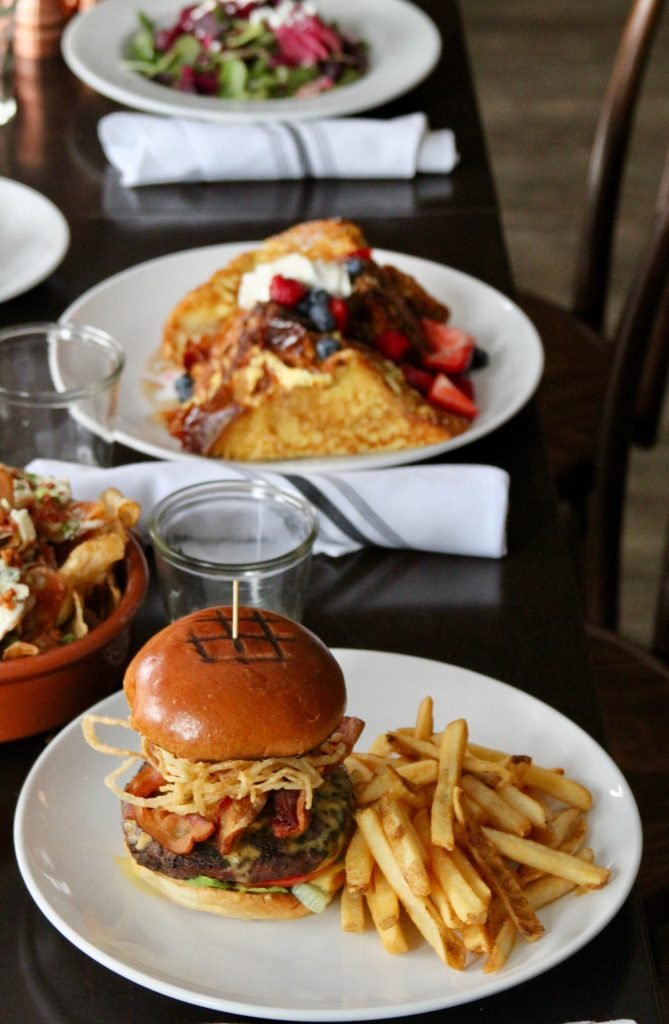If you’re looking to boost your restaurant’s online presence and attract more customers, then understanding how to use Google Ads for restaurant marketing is essential. With the ever-growing competition in the food industry, it’s crucial to leverage digital advertising platforms like Google Ads to make sure your restaurant stands out from the crowd. In this article, we’ll explore the various ways in which Google Ads can be utilized to promote your restaurant, increase brand awareness, and drive more traffic to your website or physical location. From targeting specific demographics to creating enticing ad copy, we’ll walk you through the steps to effectively market your restaurant using Google Ads.


Keywords Research
When it comes to restaurant marketing using Google Ads, the first step is to identify relevant keywords for your establishment. Think about the types of dishes you offer, the ambiance of your restaurant, and any unique selling points that set you apart from the competition. Use keyword planner tools provided by Google to find popular and relevant keywords that potential customers may be searching for. Consider both general keywords and more specific ones that relate to your local area and the type of cuisine you serve. Long-tail keywords can also be beneficial, as they target more specific search queries and attract customers who are closer to making a purchasing decision.
Set Up Google Ads Account
To utilize Google Ads for restaurant marketing, you need to create a Google Ads account. This will allow you to access the platform’s advertising tools and features. Setting up the account involves providing information about your business, such as your website URL, location, and contact details. Once you have created the account, you will need to set up billing information to ensure that your Google Ads campaign can run smoothly. Choose a billing method that works for you, whether it be automatic payments or manual payments, and enter your payment details accordingly.
Define Campaign Settings
Once your Google Ads account is set up, it’s time to define your campaign settings. This involves determining the specific parameters for your ad campaign. For restaurant marketing, you may want to focus on factors such as geographic location, target audience demographics, and scheduling. Consider the areas you want to reach with your ads and set your campaign targeting accordingly. Define your audience based on factors like age, gender, and interests to ensure that your ads are shown to the most relevant potential customers. Lastly, determine when and how often your ads should appear by setting ad scheduling preferences.
Campaign Types
Google Ads offers various campaign types that you can utilize for your restaurant marketing. Each campaign type is designed to reach potential customers through different channels and media formats. Search campaigns allow you to display text ads when users search for specific keywords related to your restaurant. Display campaigns use visual banners and images to showcase your restaurant across websites and apps that are part of the Google Display Network. Video campaigns enable you to advertise your restaurant through video content on platforms like YouTube. App campaigns focus on promoting your restaurant’s mobile app, while discovery campaigns leverage the Google Discover feed to reach users who are actively looking for new things.


Campaign Structure
Organizing your Google Ads campaigns is essential for effective restaurant marketing. Consider creating separate campaigns based on geographic location and your target audience. This approach allows you to tailor your ads and messages to specific areas or demographics. Within each campaign, create ad groups that are centered around specific menu items or promotions. This allows you to design ads that are highly relevant to the customers you are targeting. To enhance your ads further, make use of ad extensions. Ad extensions provide additional information that can entice potential customers, such as links to your menu, phone number, or customer reviews.
Ad Formats and Content
When it comes to creating ads for restaurant marketing with Google Ads, you want to make sure they are compelling and capture the attention of potential customers. Start by writing ad copy that highlights the unique selling points of your restaurant. Showcase what makes your establishment special, whether it’s the quality of your ingredients, the expertise of your chef, or your exceptional customer service. Include relevant keywords in your ad headlines and descriptions to improve the chances of your ads being displayed when users search for those keywords. Additionally, create visually appealing display ads that make use of enticing images and engaging designs. If you have the resources, video ads can be a powerful tool to showcase your restaurant’s ambiance and mouth-watering dishes. Lastly, ensure that your ad formats are optimized for mobile devices, as many users browse the internet and search for restaurants on their smartphones.


Budgeting and Bidding
Determining your budget for Google Ads is an important consideration in restaurant marketing. Decide how much you are willing to spend on your advertising campaign and allocate your budget accordingly. Keep in mind that setting a higher budget allows for increased reach and visibility, but it’s important to ensure that the return on investment justifies the expenditure. To optimize your spending, set bidding strategies based on your goals. Whether you’re prioritizing clicks, conversions, or impressions, Google Ads offers different bidding options that can help you achieve your objectives. Continuously monitor the performance of your ads and adjust your bids accordingly to get the most out of your budget.
Targeting and Audience
To effectively market your restaurant using Google Ads, you need to define your target audience. Consider the demographics and interests of the customers you want to attract, and tailor your ad campaigns accordingly. Use Google Ads’ audience targeting features to refine your audience, ensuring that your ads are shown to the most relevant users. Additionally, leverage location targeting to reach potential customers in your local area. This can be particularly useful for attracting customers who are looking for nearby dining options. Another powerful targeting tool is remarketing, which allows you to target users who have previously visited your restaurant’s website. By reminding them of their previous interest, you can increase the chances of converting them into customers.


Tracking and Measurement
Tracking the success of your Google Ads campaign is essential for restaurant marketing. Implement conversion tracking to measure the impact of your ads on valuable actions, such as website reservations or online orders. This allows you to determine the ROI of your advertising efforts and make data-driven decisions. To gain further insights, use Google Analytics to analyze website traffic and user behavior. This tool can provide valuable information about how users are interacting with your website, which can help you optimize your ads and landing pages. Set up goals and track key performance metrics, such as click-through rates and conversion rates, to monitor the effectiveness of your campaign and identify areas for improvement.
Ad Scheduling and Delivery
To maximize the visibility and impact of your restaurant marketing ads, consider scheduling them to appear during peak dining hours. By targeting potential customers when they are most likely to be thinking about where to eat, you increase the chances of attracting their attention. Google Ads allows you to control the delivery of your ads, ensuring that they are shown at the right time and in the right frequency. This helps to avoid wasting your budget on ad impressions that may not reach your target audience effectively. By carefully managing the scheduling and delivery of your ads, you can make the most of your advertising budget and increase your restaurant’s visibility during crucial times.


Optimization and Testing
In restaurant marketing, regular optimization is key to improving the performance of your Google Ads campaigns. Continuously check and optimize the performance of your chosen keywords to ensure they are delivering results. Experiment with different ad variations and landing pages through A/B testing to determine which combinations perform best. Consider testing different campaign settings, such as bidding strategies and targeting options, to find the most effective configuration for your restaurant. Lastly, monitor and adjust your bids based on the performance of your ads to maximize their performance. By continuously optimizing and testing your campaigns, you can drive better results and attract more customers to your restaurant.
